10278Views
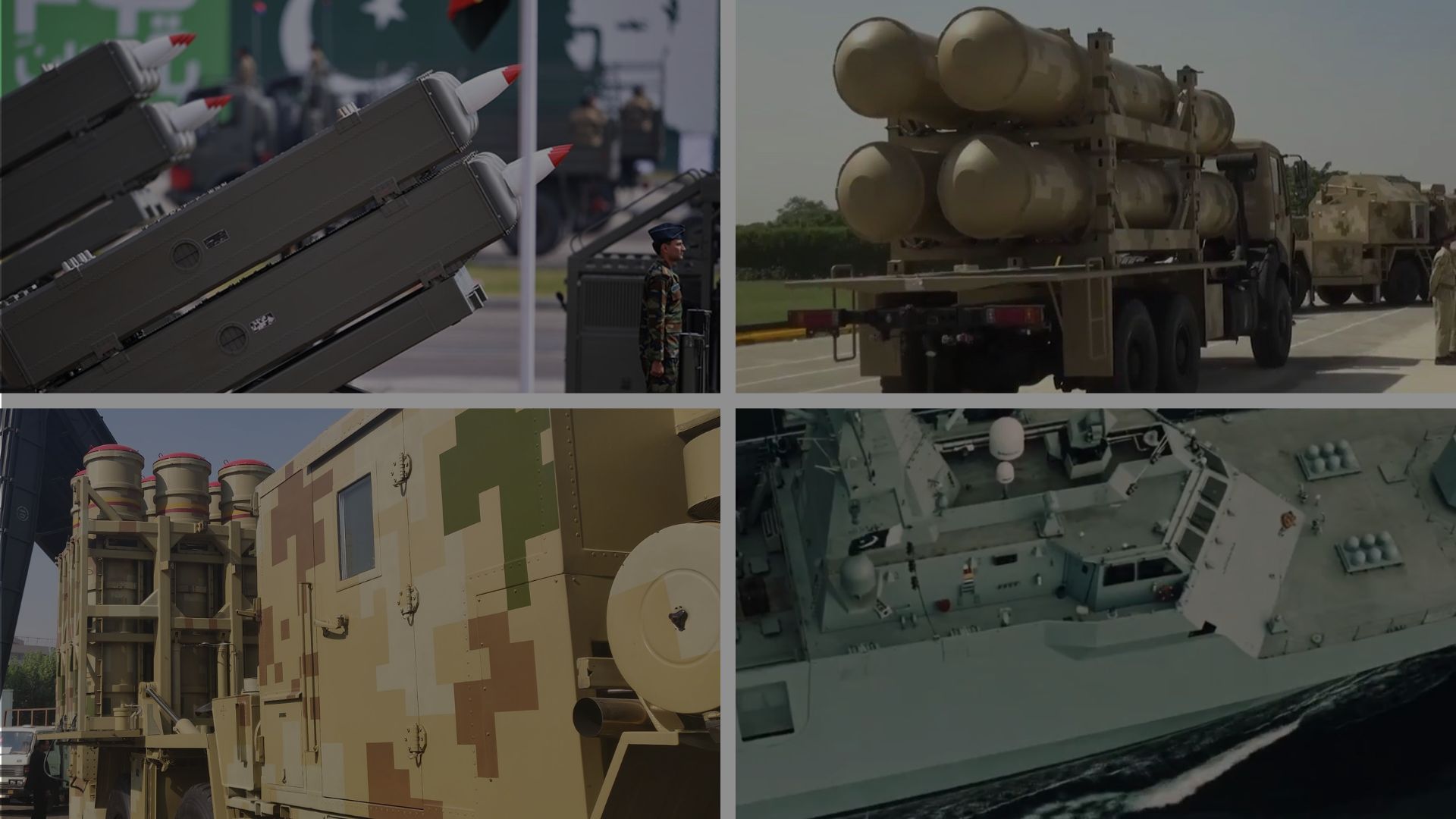
Report: Pakistan’s Air Defence Systems
Bilal Khan
Founder of Quwa, Bilal has been researching Pakistani defence industry and security issues for over 15 years. His work has been cited by Pakistan's National Defence University (NDU), the Council of Foreign Relations, Bulletin of Atomic Scientists, Centre of Airpower Studies and many others. He has a Hons. B.A in Political Science and Masters of Interntional Public Policy from Wilfrid Laurier University in Waterloo, Ontario, Canada.
Since the start of the Russia-Ukraine War, ground-based air defence systems (GBADS) have taken on more importance and urgency, with many countries increasing their investment in short-, medium-, and long-range surface-to-air missiles (SAM). Pakistan is no different. Since 2022, the Pakistan Army (PA), Pakistan Air Force (PAF), and Pakistan Navy (PN) have each made acquiring new SAMs and radars a key priority in their respective procurement modernization programs.
Today, each of the Pakistani military’s tri-services is focused on acquiring longer-ranged solutions with more sophisticated features, such as limited anti-ballistic missile (ABM) capabilities.
Imports (mainly from China and, to a lesser extent, Europe) are driving Pakistan’s air defence projects, investment in indigenous solutions is growing, paving the way for domestic industry players to take on long-term requirements.
The Early Period of Pakistan’s Air Defence Efforts
Prior to the 1970s, the PAF largely relied on ground-controlled interception (GCI). This is where it used surveillance radars (such as the British Type 21 and American FPS-20) to coordinate fighter aircraft to intercept air threats. While it also used anti-air guns (AAG), fighter interceptors were the PAF’s primary means of neutralizing intruding enemy aircraft.
However, the PAF was aware of the growing adoption of SAMs which, by the 1970s, pushed the PAF leadership to study a more robust air defence strategy. This led to the creation of Pakistan Air Defence Command in 1975 and, shortly thereafter in 1976, the launch of ‘Project Crystal’, an organized program for building an integrated GBADS.
Under Project Crystal, the PAF acquired 45 Mobile Pulse-Doppler Radars (MPDR) from the German company Siemens (since acquired/absorbed by Hensoldt), six control and reporting centers (CRC), and six AN/TPS-43 air surveillance radars from the United States.
In tandem, the PAF paired its new radars with a number of SAM systems, namely the Thales Crotale series and, for a brief period of time, the Chinese HQ-2, which was based on the Russian SA-2.
While a significant step forward, the PAF’s air defence environment mostly centered on short-range air defence systems (SHORAD). It seemed that the PAF mostly used SAMs for defending facilities, like its air bases, not territorial defence. The latter would still be managed by fighter aircraft.
During this period, both the PA and PN also began investing in SAMs. The PA had entirely focused on man-portable air defence systems (MANPADS), likely as a means to deal with low-flying aircraft, such as helicopters, targeting its infantry, armour, and artillery. In the 1980s and 1990s, the PA used a wide range of MANPADS, including the American FIM-92 Stinger, French Mistral, and Saab RBS-70.
Interestingly, the PN’s air defence program had taken off quite sharply in the 1980s when it leased four Brooke-class frigates from the United States. The Brooke-class frigate came equipped with the RIM-66 Standard-I SAM, a medium-range system capable of providing area-wide anti-air coverage.
However, when the PN returned these frigates to the U.S., it was not able to replace the RIM-66 with a similar or comparable system. Instead, the PN acquired second-hand Type-21 frigates from the United Kingdom and, in turn, equipped half of them with the LY-60 short-range SAM from China. In effect, the PN’s anti-air warfare (AAW) capability regressed from area-wide coverage via the RIM-66 to basically point-defence. The PN finally managed to replace the RIM-66 via the LY-80-equipped Tughril-class or Type-054A/P multi-mission frigate it acquired from China from 2022.
Pakistan’s limited air defence capabilities likely stemmed from two main factors.
First, each service arm was focused on building its core offensive capabilities through major platforms, such as combat aircraft and submarines. The PAF, for example, wanted to replace early Cold War-era fighters, such as the Chengdu F-7 (i.e., Chinese-built MiG-21) and Dassault Mirage III/5 with multirole platforms loaded with contemporary technology. The centerpiece of this initiative was the JF-17, which likely took up the bulk of the PAF’s resources in the 1990s and 2000s.
Second, Pakistan simply lacked options for effective medium-to-long-range SAMs. America and Russia were unwilling to provide solutions, and European items were generally too expensive. Thus, it is not at all surprising that Pakistan’s biggest investments in air defence coincided with China and Turkiye rising as adept solutions providers for radar and SAM technology.
In this backdrop, Pakistan had to use its limited resources where it understood it could get the greatest impact, hence the investment in major platforms, like multirole fighters, submarines, tanks, and artillery. There was likely a sense that operating modern platforms in large numbers (especially in the backdrop of nuclear weapons) would help deter India.
When Pakistan Intensified its Air Defence Investments
Two major events likely pushed each of Pakistan’s service arms to take air defence more seriously: the skirmish with India in 2019 along the Line of Control (LoC) in Kashmir, and the Russia-Ukraine War.
One key aspect of the 2019 skirmish with India was the advent of stand-off range strikes. This is when a country can deploy guided munitions, such as glide bombs like the Israeli SPICE which the Indian Air Force (IAF) used over Balakot, at long-range, potentially from within their own borders.
The one air strike exposed several major problems to the PAF.
First, there will always be the risk of the IAF – and, for that matter, the Indian Army (IA) and Indian Navy (IN) – carrying out precision-strikes from within the Indian border. In other words, the IAF does not need to cross into Pakistan to be a threat. While the PAF has its own stand-off weapon (SOW) inventory, the risk of an IAF munition striking a target and causing substantial losses remains, especially in a war. So, Pakistan now needs capabilities to help neutralize those incoming SOWs.
Second, PAF fighters may not be able to intercept an intruding threat fast enough. A SAM, on the other hand, could potentially begin the interception process much earlier.
The two scenarios above would have been theoretical if not for the Russia-Ukraine War, during which the Ukrainians showed that adept air defence deployment can neutralize guided munitions as well as intercept advanced fighters, such as the Sukhoi Su-30SM and Su-34.
With real-world data validating the theory and alternative suppliers (via China and Turkiye) now in play, the PAF, PA, and PN have significantly boosted their spending on SAMs.
The Pakistan Army’s Air Defence Program
The PA’s air defence efforts are organized under its ‘Comprehensive Layered Integrated Air Defence’ (CLIAD) system. CLIAD is a multi-layered system consisting of short-, medium-, and long-range SAM systems as well as their accompanying surveillance and targeting radars.
Long-Range
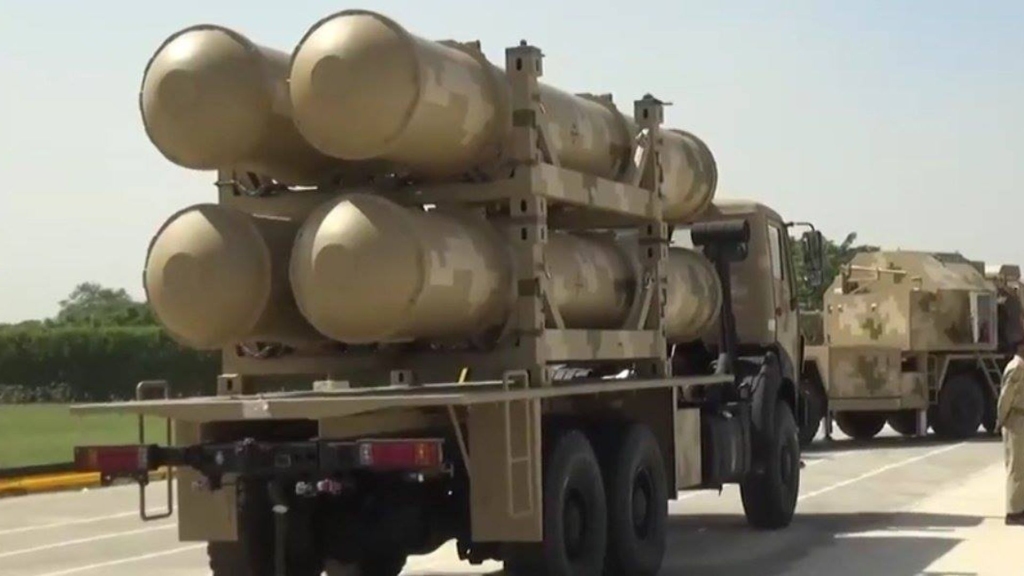
For long-range coverage, the PA uses the Chinese HQ-9/P, which it classifies as a ‘High-to-Medium Air Defence System’ (HIMADS). The HQ-9/P utilizes an active radar-homing (ARH) seeker paired with an inertial navigation system (INS). The accompanying HT-233 phased-array fire control radar guides the HQ-9 missile via data-link until a certain point, at which point the ARH activates to independently guide the SAM until it is in proximity to the target. The HQ-9/P has a stated range of 125 km.
Medium-Range
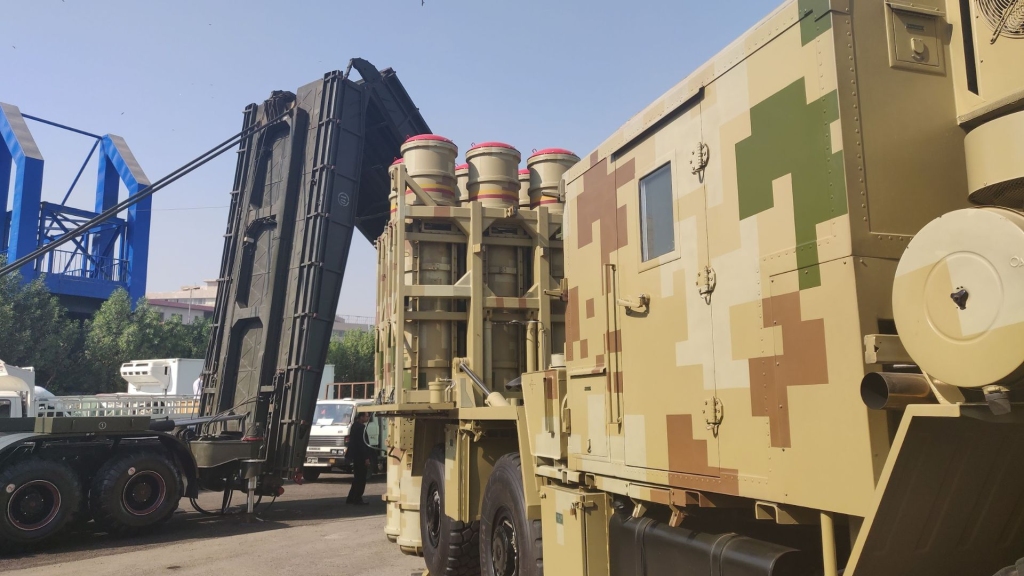
The PA’s medium-range systems are the LY-80 and LY-80EV, which it classifies as ‘Low-to-Medium Air Defence Systems’ (LOMADS). The LY-80 and LY-80EV offer ranges of 40 km and 70 km, respectively, and appear to rely on IBS-150 S-band passive electronically scanned array (PESA) surveillance radar as well as several L-band fire control radars, which can reach 150 km and 85 km, respectively. These SAMs use a semi-active radar-homing (SARH) seeker paired with INS, meaning, they rely on the fire control radar to maintain a lock on the target from launch until the missile reaches the target.
Short-Range

The PA’s short-range layer is split in two segments: ‘Extended Short-Range Air Defence System’ (E-SHORADS) and Short-Range Air Defence System (SHORADS).
The primary E-SHORADS solution is the Chinese FM-90, an export variant of the HQ-7, which itself is a Chinese-built version of the French Crotale. The FM-90 missile uses a command-guidance system.
This is where a fire control computer uses information from a radar to calculate trajectory and other data to determine the best course for intercepting a target. The computer feeds this information to the missile via data-link until the SAM is in proximity to the target.
The FM-90 SAM has a range of up to 15 km and is capable of engaging low-flying aircraft, including drones, helicopters, and, potentially, guided munitions.
In terms of the SHORAD layer, the PA uses a number of MANPADS, including the Saab RBS-70 NG (range: 9,000 m), Chinese FN-6 and FN-16 (range: 6,000 m), and indigenously produced ANZA-Mk2 and ANZA-Mk3 (range: 5,000 m).
Before the formation of CLIADS, the PA’s anti-air coverage was limited to SHORAD ranges. Since the mid-2010s, the PA progressively extended its reach to medium-range and long-range coverages…end of excerpt. Log in or subscribe to access the full article.
Pakistan Air Force’s Strategic Air Defence Focus
Traditionally, SAMs were not at the center of the PAF’s operational planning. In fact, until 2019, the PAF’s longest-range SAM system was the Spada 2000-Plus, a short-range system with a reach of 20 km. For the PAF, SAMs were a means of providing low-level protection for facilities, like air bases, and not a strategic factor akin to multirole fighter aircraft.
This changed after 2019. Since then, the PAF has begun leveraging SAMs for territorial defence by acquiring both long-range and medium-to-long-range systems.
Regional Air Defence Umbrella
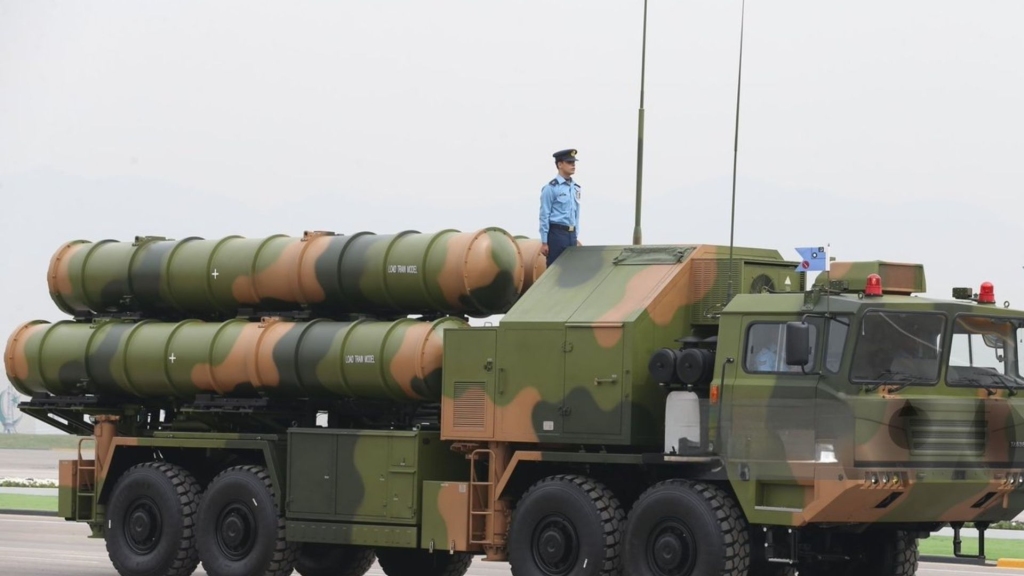
The PAF recently disclosed that it operates the Chinese HQ-9BE. This long-range SAM has a range of 260 km and a maximum altitude reach of 27 km against combat aircraft. It can also intercept munitions, such as air-to-ground missiles, up to a range of 50 km and altitude of 18 km. The HQ-9BE can engage cruise missiles up to a range of 25 km and an altitude of at least 0.02 km.
The HQ-9BE may be the foundation for a regional air defence umbrella, one that helps neutralize – if not deter – enemy air activity near the border and, potentially, stop ballistic missiles. It is worth noting that the HQ-9BE offers limited ABM capability against tactical ballistic missiles (TBM).
Area-Wide Air Defence Umbrella
It is unclear if the PAF has a medium-to-long-range SAM. A previous promotional video had indicated that it acquired or ordered the Chinese HQ-16FE, which has a range of 160 km. However, references to the HQ-16FE have since been omitted or stricken off. Thus, it is possible that the medium-range layer is still an open requirement.
Short-Range Coverages
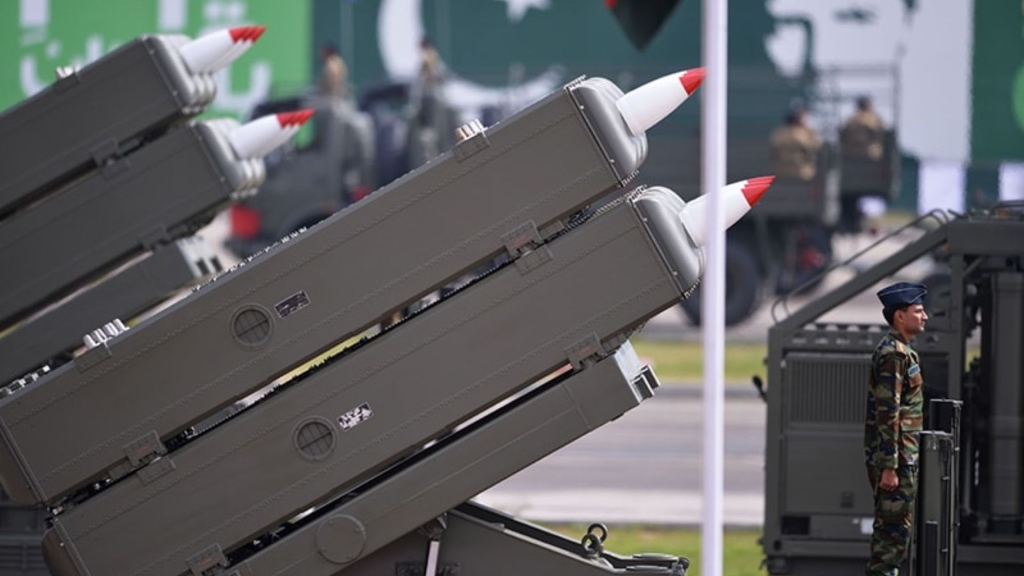
The PAF is also improving its short-range and point-defence coverages. For example, it is upgrading the Spada 2000-Plus into the Spada Close-in-Weapons System (CIWS). The Spada CIWS will likely pair the existing Spada 2000-Plus system with an Oerlikon GDF 35 mm AAG. In addition, the PAF is looking at replacing the sensors with homegrown solutions. It is worth noting that the PAF is building original active electronically scanned array (AESA) radars.
When reviewing the PAF and PA’s respective capabilities, one can see an apparent demarcation or division of responsibility. For example, the PA’s long-range reach is restricted to around 125 km, but PAF reach extends to 260 km and, potentially, beyond with additional acquisitions…end of excerpt. Log in or subscribe to access the full article.
Pakistan Navy
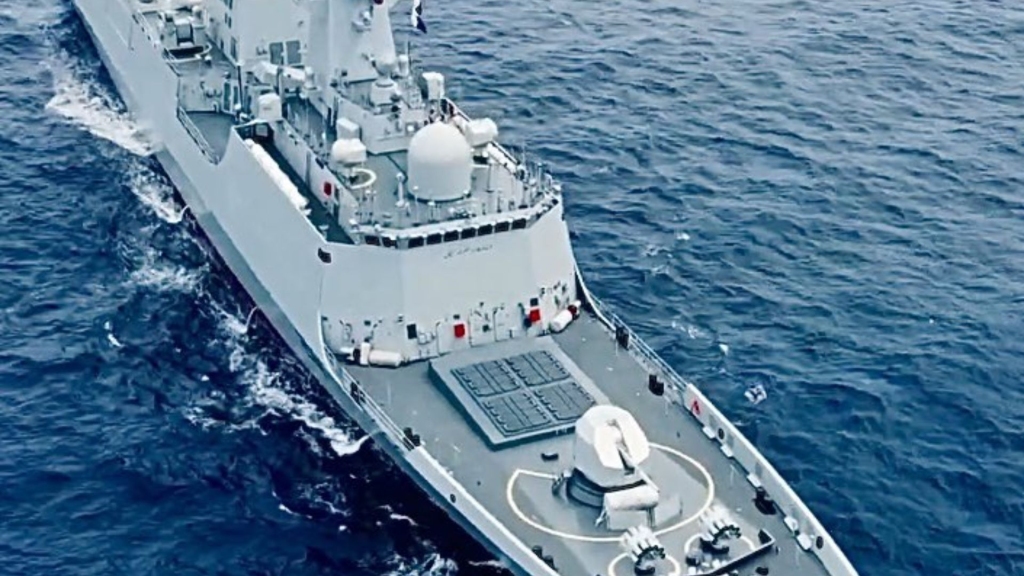
Since losing the Brooke-class frigate, the PN’s air defence coverages were restricted to point-defence, i.e., defending platforms from low-flying threats and, to a limited extent, incoming anti-ship missiles.
By 2022, however, the PN restored area-wide anti-air warfare (AAW) coverage via four Tughril-class or Type 054A/P multi-mission frigates acquired from China. This was later augmented by the purchase of four Babur-class corvettes from Turkiye.
Currently, the PN will leverage two area-wide SAM systems: the Chinese LY-80 and the Italian-British MBDA CAMM-ER.
Like the LY-80 in use by the Army, the naval variant offers a range of 40 km while using a SARH/INS guidance suite. Each Tughril-class frigate can carry 32 LY-80s via vertical launch system (VLS) cells.
The MBDA CAMM-ER has a stated range of over 40 km, but uses an ARH/INS guidance suite rather than SARH/INS. Like the LY-80, the CAMM-ER is deployable from VLS. The Babur-class corvette will deploy 12 CAMM-ERs via the GWS-26 VLS supplied by Britain.
The PN’s adoption of the CAMM-ER may expand to additional ships. For example, two of its four new Yarmouk-class offshore patrol vessels (OPV) acquired from the Dutch shipbuilder Damen Group were designed to carry VLS for SAMs. The PN is also studying the possibility of upgrading its four F-22P or Zulfiquar-class frigates with the CAMM-ER as well.
Finally, the PN’s original frigate program – the Jinnah-class frigate – is also expected to carry up to 16 CAMM-ERs via the GWS-26 VLS. Reports peg the PN planning for as many as six such frigates…end of excerpt. Log in or subscribe to access the full article.
Indigenous Initiatives
While each service arm is taking greater ownership of its respective air defence requirements, it should be noted that the PAF, PA, and PN are not planning their work in disconnected silos. To the contrary, it seems that there are several programs ‘gluing’ the tri-service’s air defence efforts into a more cohesive framework.
Unified Sensor Coverage
In 1999, the PAF set out to build a unified radar feed for the tri-services called the ‘Recognized Air and Maritime Picture’ (RAMP). RAMP combines the sensor feeds of both land as well as sea-based radars and the PAF’s airborne early warning and control (AEW&C) aircraft into one view.
By combining these sensor feeds, the RAMP offers a complete picture, one that (in theory) removes the blind spots resulting from relying on strictly one radar source (e.g., using a land-based radar but dealing with gaps due to the blind spots created by the curvature of the Earth).
In building their respective air defence doctrines, each of the tri-services could be using the RAMP to help make their acquisition and deployment decisions. For example, the PA may not need long-range, high-altitude radars as it can leverage the PAF’s AEW&C as well as AN/TPS-77 feeds…end of excerpt. Log in or subscribe to access the full article.
Surface-to-Air Missiles
In addition to radars, the Pakistani industry is also developing at least two SAM platforms: the LoMADS and the FAAZ-SL-series. The LoMADS is expected to provide a range of 7-100 km, while FAAZ SL will have a range of 20-25 km. Both systems may use the MFADR as a surveillance and targeting radar…end of excerpt. Log in or subscribe to access the full article.
C-UAS Systems
The Pakistani industry is working on at least one counter-unmanned aerial system (C-UAS) solution. Certain UAS threats involve drone swarms and low-cost loitering munitions that are difficult to defend against with SAMs. Hence, these threats require more scalable solutions, like electronic warfare (EW) and directed energy weapons (DEW)…end of excerpt. Log in or subscribe to access the full article.
Industry Opportunities
While localized air defence solutions are a goal, the Pakistani military’s near-term acquisitions will primarily be driven by imports. Currently, China has taken up the bulk of Pakistan’s SAM purchases, while Europe and the United States have split Pakistan’s radar needs.
While cost plays a role, it may not be the deciding factor. For example, when it comes to radars, the PAF and the PN have shown a willingness to buy American and Western European systems. These include the Lockheed Martin TPS-77 MRR, a Hensoldt update kit for the MPDRs, and a new batch of Saab Erieye AEW&C platforms, among others. Thus, for the foreseeable future, Western vendors will likely have considerable opportunity in the PAF and PN’s respective radar requirements…end of excerpt. Log in or subscribe to access the full article.
Log in or subscribe to read the rest of the article
Note: Logged in members may need to refresh the article page to see the article.
